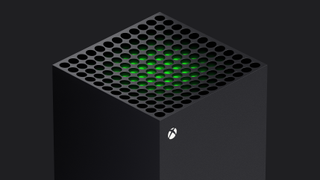Xbox Series X specs fully revealed — and there's some bad news
The Xbox Series X will have Wi-Fi 5, but no USB-C ports

The Xbox Series X may be the most powerful console ever made, but it’s still a console, and that means it’s bound to be behind PCs in certain ways. A breakdown of the Xbox Series X on Microsoft’s website confirms a potentially frustrating design decision: the console won’t have any USB-C ports whatsoever.
That could hinder the console in terms of both accessory charging time, and data transfer speed. On the other hand, the same tech specs confirm that the Xbox Series X will use a Wi-Fi 5 wireless protocol. While this is also not the very latest tech, it’s a big step up over what the Xbox One offered.
- Xbox Series X release date, price, pre-orders, specs and games
- PS5 vs. Xbox Series X: Which one should you buy?
- Plus: PS5 prices just leaked — and Xbox Series X should be nervous
Information comes from the official Xbox Series X website, under a section called “Tech Specs.” Most of the information, Microsoft has gone over ad infinitum: the Custom Zen 2 CPU, the Custom RDNA 2 GPU, the 16 GB RAM, the 1 TB SSD and so forth. The Ports & Connectivity section is of special interest, however. Here we learn that the Xbox Series X will have one HDMI port, three USB-a ports and an 802.11ac dual band wireless radio, aka Wi-Fi 5.
While the omission of USB-C ports isn’t the end of the world, it does seem like a strange choice, considering that the Xbox Series X controller will have a USB-C input. Presumably, when players want to charge it, they’ll have to use a USB-C-to-A cable, as some phones and headsets employ. While there’s nothing wrong with this type of charging, it doesn’t take full advantage of USB-C’s speed. It also means players will have to grapple with ports that take up a lot of room, and plugs that are easy to accidentally insert the wrong way.
Another potential benefit of USB-C is its ability to transfer data extremely quickly, which could have been useful for external storage drives. (Xbox Series X supports both proprietary expandable storage, and more traditional storage options via USB.) If you plan to transfer games between an Xbox Series X and an external drive, you should be prepared to give the process a little time.
There’s better news on the Wi-Fi front, although some technophiles will no doubt be bummed that Microsoft chose the slightly older Wi-Fi 5 protocol rather than the shiny new Wi-Fi 6. For those who don’t keep track of the intricacies of consumer wireless, Wi-Fi 5 allows dual-band connections (both 2.4 GHz and 5 GHz bands), as well as transfer speeds of up to 3.5 Gbps. Wi-Fi 6 is similarly dual-band, but supports speeds of up to 9.6 Gbps — a significant difference, if you have a modem and router to support it.
Granted, most people don’t have modems and routers like that. The average Internet speed in the United States hovers around 44 Mbps; Western Europe gets somewhere between 30 and 50 Mbps, and even Southeast Asia caps out around 100 Mbps. Furthermore, Wi-Fi 6 is just now rolling out to consumer devices, and arguably would have been difficult to include in a device whose physical design was all but completed last year.
Sign up to get the BEST of Tom’s Guide direct to your inbox.
Upgrade your life with a daily dose of the biggest tech news, lifestyle hacks and our curated analysis. Be the first to know about cutting-edge gadgets and the hottest deals.
Marshall Honorof is a senior editor for Tom's Guide, overseeing the site's coverage of gaming hardware and software. He comes from a science writing background, having studied paleomammalogy, biological anthropology, and the history of science and technology. After hours, you can find him practicing taekwondo or doing deep dives on classic sci-fi.

